Many writers, particularly if they’re writing fantasy, YA, or sci-fi, like to spice up their stories with the occasional song and poem. Maybe they’re trying to aid characterization with some soulful poetry, share exposition through a traditional ballad, or just make their world feel a little more real.
Done well, such embedded works can bring a story to life, but they can also distract readers, fragment plot, and spoil tone. As with everything in writing, you’ve got to know what you’re doing and why you’re doing it.
Perhaps the most famous example of author-written songs and poems emerging in fiction come from the work of J.R.R. Tolkien – songs such as Far over the Misty Mountains Cold and The Wind was on the Withered Heath help illustrate the depth of Tolkien’s fantasy world and construct Homeric mythologies behind his protagonists’ adventures. Tolkien’s songs and poetry have endured because they’re well-written examples of their own forms – they adhere to strict rhyme schemes, maintain meter, and stick in their readers’ heads.
On top of that, songs and poems are sensibly placed in Tolkien’s work, and rarely (I won’t say ‘never’) feel arbitrarily added in. So, how can you achieve a similar feat in your own work? Let’s have a look.
Have a reason
You wouldn’t fill your horror novel with chocolate eclairs just because you really like chocolate eclairs, so don’t feel impelled to add poetry or song to your fiction just because you’re currently really into Emily Dickinson or Nick Cave. Like everything else in a work of fiction, poems and songs have to be doing something: they have to be there for a reason.
Don’t include poetry or song in your story on a whim – they need purpose to work.Click To TweetBefore you fill your book with a poetic extract or song, ask yourself the following questions:
- What purpose does the poem/song serve in this instance?
- Is it integral to the story/scene?
- Would the scene be better without it?
- Is the poem/song consistent with the characters involved?
- Does the poem/song stand on its own?
If you can’t answer any of those, either reconsider or rework the scene until everything fits. To return to our famous example: Tolkien’s songs help root his world in the trappings of European and classical history – after all, the oral tradition defined the epic poetry of the Greeks and other early European nations, and this kind of mythological, historical scale was exactly what Tolkien was trying to tap into for his own epic.
But maybe you’re not trying to saturate your settings and fantastical societies of dwarves and elves with history and culture – maybe, like Boris Paternak in Dr. Zhivago, you’re using poetry to make a point about the endurance of art compared to the ephemeral natures of both the individual poet and the tyrants that rule them. Or maybe, like Vladimir Nabokov, you’re using poetry to drive the entire plot of a novel forward – Pale Fire, the titular poem in Nabokov’s Pale Fire, contains the novel’s plot: it is the autobiography of the novel’s central murdered poet.
Poems and songs can perform all number of functions in fiction, so make sure yours are doing something. The nihilistic lyrics of a hard rock band aren’t doing anything on their own, but if you patter in a few edgy, relevant lyrics as a detective pushes his way through the gig’s packed crowd, desperately seeking out the terrorist he knows is somewhere inside… well, now your lyrics are doing something.
Make it good (unless it should be bad)
This brings me to another important point: make sure the poems/lyrics you write are, well, good (unless the point is that they’re bad). If you’re great at writing fiction but terrible at poetry, the reader will clock the sudden shift in quality, and it’ll distract and disengage them from the plot (something that the sudden inclusion of even the best poetry or song lyrics already risks).
Your fictional songs and poetry need to be so good the reader is happy about the detour.Click To TweetThis is something that’s often cited as one of the main failings of Aaron Sorkin’s Studio 60 on the Sunset Strip. A comedy-drama about a late-night sketch show and the people who work on it, the show included multiple sketches that viewers didn’t find funny – something of a death knell for how it informed the drama going on behind the scenes.
But quality isn’t the only thing to keep in mind: make sure your lyrics and poems are relevant to the scene they’re quoted in. Bad poetry would be appropriate if the point of the poem’s inclusion is to indicate a character is pretentious and pitiful, but a dodgy stanza is jarring if it’s spouted by a celebrated and famous poetry professor to an academic audience.
Make it distinct
If you’re dead-set on including lyrics or poetry, make sure it’s clearly distinct from the surrounding sections of narrative prose. The worst kind of reader is a confused reader, and nothing will confuse your reader like a chapter that merges suddenly into a kind of abstract free verse ruminating on, like, time, man.
But how to make poetry and song distinctive? Simple: form, meter, and rhythm. Let’s have a look at Tolkien’s aforementioned song from The Hobbit, Far over the Misty Mountains Cold:
Far over the Misty Mountains cold,
To dungeons deep and caverns old,
We must away, ere break of day,
To seek our pale enchanted gold.The dwarves of yore made mighty spells,
While hammers fell like ringing bells,
In places deep, where dark things sleep,
In hollow halls beneath the fells.– J.R.R. Tolkien, The Hobbit
Right, now let’s pretend we’re in high school English and tear this rascal apart. First, we look at these two opening quatrains and spot an AABA rhyme scheme, mirroring Robert Frost’s wildly famous (and wildly lovely) Stopping by Woods on a Snowy Evening. A count of beats tells us we’re looking at lines of eight syllables each (except the first line, which is nine syllables) written in iambic tetrameter – this means there are four iambic feet in each line (an iambic foot consisting of an unstressed followed by a stressed syllable).
In other words, there’s some serious poetic form going on here, and you’d have to have never seen a poem before in your life not to realize it. The rhythm, the meter, and the strict rhyme scheme make the words very easy to fit to music (or at least to a chant), and the reader understands the shift and recognizes that the form of the text has changed.
Choose a form, rhythm and rhyme scheme that the reader can easily pick up.Click To TweetThe form of Far over the Misty Mountains Cold lends itself to a slow, somber beat, which in itself lends the coming adventure (for we remember that the dwarves sing this song the night before setting off on their grand quest to steal Smaug’s treasure) an air of funereal grandeur. Perfect!
Everything in moderation
I mentioned before that your readers can’t actually hear any of the music or poetry you’re throwing into your book; after all, this isn’t a Shakespeare play where excessive use of iambic pentameter is sure to pay off in the eventual performance – this is fiction, and is to be read.
With this in mind, make sure not to go over the top. The one criticism I can throw at Tolkien regarding his use of music and poetry is that he didn’t know when to stop. That one song I quoted earlier goes on for ten verses, and is just one of the dozens of pages-long songs and poems that arise in both The Hobbit and The Lord of the Rings. Nobody’s got time for that.
Verse in any form is easy to overdo in fiction, especially if the significance of the verse’s inclusion is mostly in its existence in the first place – we don’t need fourteen stanzas to understand that your poet character is a poet. I’ll grudgingly admit that Tolkien gets away with so many songs mostly because his songs are rarely there to indicate a character likes to sing or that a scene was festive and thus appropriate for songs – rather, his lyrics are choc-full of information that add to the world, the plot, and the mythologies of each fantasy race. Still, though – don’t go full Tolkien. It’s not the twentieth century any more.
A place for poetry and song
Songs and poetry can add a lot to your story, but they have to be deployed carefully, and they have to be good. A final tip: if you have a real urge to include song and poetry in your fiction, but you know it’s not quite appropriate, consider actually writing poetry and song lyrics. It may not seem like an option, but it’s just another form of writing, and one with a lot in common with prose.
What are your favorite novels that use songs or poetry? Have you tried songs or poetry in your own fiction? Let me know in the comments. Or, for more great advice, check out Want To Invent A Fictional Language? Here’s How To Do It, Why More Authors Should Harness The Power Of Conceit and Your Quick And Easy Guide To Theme, Allegory And Symbolism.

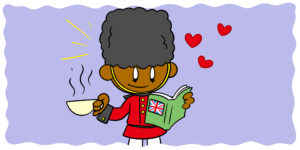
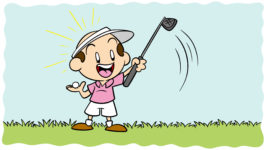
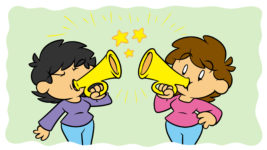
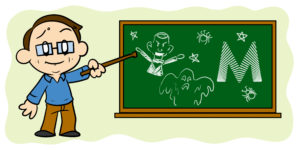
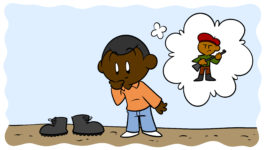
4 thoughts on “Including Original Poetry And Song In Your Fiction (What You Need To Know)”
I loved “O Brother where art thou. Of course, they didn’t overdo them.
Dave
Hi David,
a great example of song in fiction! Thanks for your comment.
Cheers,
Fred
Writing a prophecy in fantasy: COMPLETE, UTTER AGONY.
Hi Annabelle,
Ha! You’re not wrong – getting the tone just right can be an absolute pain. I hope you’ve managed it!
Best,
Fred